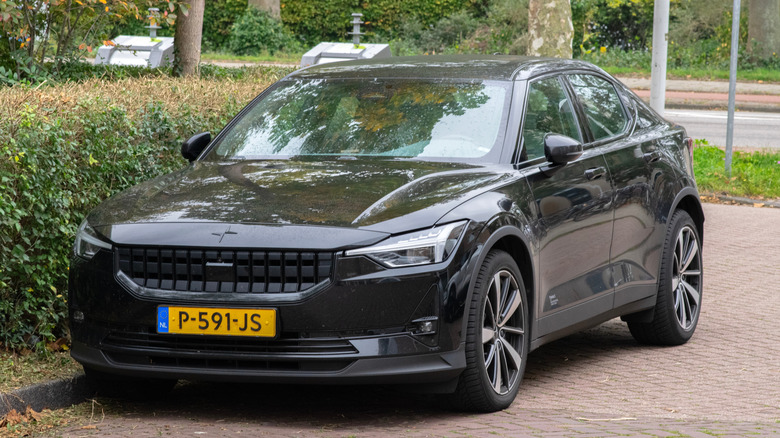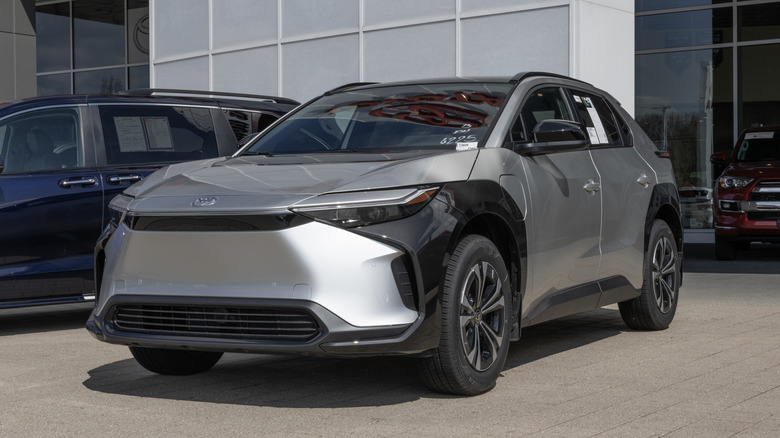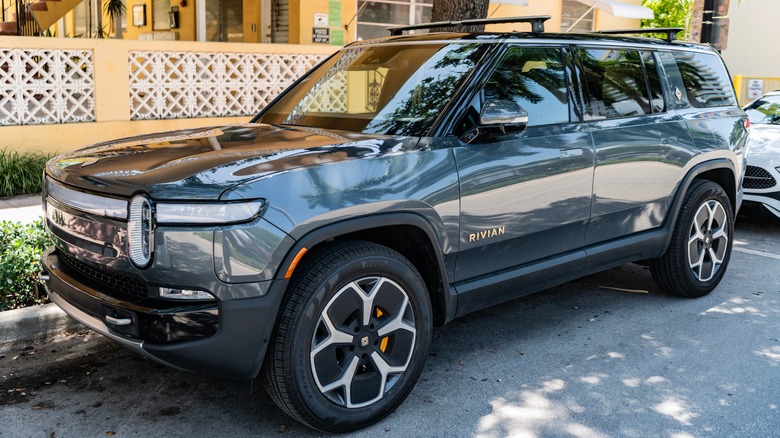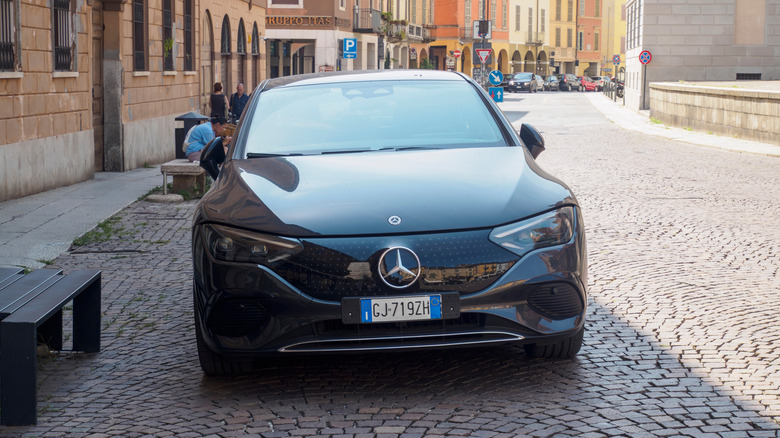5 EVs You Should Avoid (According To Consumer Reports)
Electric vehicles have come a long way in a short amount of time. They're quiet, efficient, and far cleaner to operate than traditional gas-powered vehicles, and with more body styles and price points available than ever, it's easier now to find an EV that fits your lifestyle. But just like internal combustion vehicles, not every EV is a winner. Range limitations, long charging times, awkward interiors, and harsh ride quality can make some models more frustrating than futuristic.
Consumer Reports rated some electric vehicles highly, but what about those not rated so well? There are five EVs that CR recommends steering clear of, whether due to reliability concerns, practicality issues, or simply falling behind the competition. It's also worth noting that CR remains generally cautious about EV reliability as a whole; many models still have more problems per year than their gas-only counterparts.
Of course, taking anyone's word for it isn't a substitute for getting behind the wheel yourself, but it's a good place to start. Every driver has different priorities: the feel of the ride, cabin layout, charging access, tech features, you name it. Think of this as your head start — a quick guide to the EVs that may be more trouble than they're worth. Then test-drive with your own needs in mind.
Nissan Leaf 2025
On paper, the Nissan Leaf 2025 earned a Green Choice laurel from CR, indicating the vehicle was up to par with the publication's environmental standards — but that's pretty much where the pros end and the critiques begin. Available in two trims, the S and the SV Plus, CR dinged the S trim for its lackluster 149-mile range and went on to say that even the SV Plus's 212-mile range doesn't measure up to the competition like the Hyundai Kona and Kia Niro EV, making them perfect alternatives to the Leaf 2025.
When it comes time to charge the Leaf, drivers are in for an unfortunate surprise: it takes roughly 8 hours to charge the S model and about 10.5 hours to juice up the SV Plus. The vehicle also uses an outdated DC charging connection, making it difficult to find a public charging station that the car will get along with.
As far as the actual driving experience goes, Consumer Reports claims the ride is "soft until you hit a sharp bump," and that handling felt "mundane but secure." Interior ergonomics aren't much better: the steering wheel doesn't telescope, the center console crowds the driver's right leg, and the rear seat feels tight for adults.
Polestar 2 2025
The 2025 Polestar 2, Volvo's stylish electric liftback, didn't just get a few raised eyebrows from Consumer Reports — it got a full-on reality check. Yes, CR applauded the Polestar's strong efficiency and nimble handling, but the praise ends almost immediately. According to the experts, the ride quality is "... very stiff and choppy," a glaring flaw in a vehicle that's supposed to deliver premium comfort.
It takes about 10 hours to completely recharge the vehicle's 82-kilowatt-hour battery; not a terrible estimated recharge time, but definitely not something to write home about. Then there's the fact that the interior is rather depressing-looking, and that both the driver's seat and rear seating are cramped and uncomfortable.
CR also took issue with the Polestar's dizzying Google infotainment stack, but was glad that a software update finally added Apple CarPlay support. For close to $65,000, those looking for a true luxury experience may walk away from the Polestar 2 feeling pretty disappointed, which is why it would be better to go with the BMW i4 2025 or the Hyundai Ioniq 6 2025 for a much more refined EV drive across the board.
Toyota bZ4X 2025
It's always a little surprising to see a Toyota vehicle on a "don't buy" list, but CR doesn't go as hard on the bZ4X as it does some of the other EV vehicles on this list — so there's that. The bZ4X is a two-row electric SUV with a chassis similar to that of a modern RAV4. Sold in front-wheel and all-wheel configurations, the former gets around 252 miles for range, while the latter comes in around 210 miles.
In terms of today's range standards, those aren't the most impressive specs (though you can always try and optimize with some methods for extending your vehicle's electric range), and the bZ4X's 6.6-kilowatt onboard charger will make for some relatively slow charge times at home. There are a number of other flaws that stack up against the bZ4X, such as its 100-kilowatt DC fast charging (it lags behind competitors), it's missing a glovebox, has an awkwardly-placed instrument panel, and there's no rear wiper.
CR's predicted owner satisfaction for the BZ4X trends toward the red, which doesn't bode well for Toyota's first-ever ground-up EV. The Tesla Model Y 2025 and Ford Mustang and Mach-E 2025 are suitable alternative rides to Toyota's semi-folly EV.
Rivian R1S 2025
One of the larger disappointments (literally by vehicle size) is the Rivian R1S 2025, a three-row electric SUV that gets the Green Choice trophy and props for its acceleration and decent agility. That said, CR claims the R1S delivered tail-happy driving when the vehicle was pushed to its limits. The publication also went on to ding the R1S for its overly stiff ride, electric motor whine at lower speeds, and a regenerative braking system that feels too strong.
Usability also takes a hit: almost everything in the cabin is controlled through the touchscreen, which means even routine adjustments require menu-diving. CR goes on to say that Rivian claims the EV can accept up to 200 kilowatts via DC charging, but that the review team didn't see anything close to that when testing the vehicle.
The R1S dips into the red for predicted reliability, and the maxed-out trim goes for a whopping $105,900 — leading CR to recommend the Kia EV9 2025 as a far more capable replacement.
Mercedez-Benz EQE SUV 2025
Mercedes-Benz is typically known for its reliable and luxurious vehicles, earning favor from drivers and enthusiasts worldwide. Classed as the "luxury electric SUV to avoid," the Mercedes-Benz EQE SUV 2025 delivers fast and responsive acceleration, powered by its 288-hp powertrain. The vehicle also maintains decent efficiency, getting up to 284 miles for range when driving at highway speeds. Its 170-kilowatt max acceptance rate netted the CR team an extra 170 miles of range for just 30 minutes spent at a charging station, too.
Where CR starts to take issue is with the 9.6-kilowatt onboard charger, which means slower charging times at home. And while the publication praised the EQE's ride and handling, they weren't thrilled with how spongy the brake pedal felt. CR also assigned demerits for distracting vehicle controls and below-average reliability.
The end-all, be-all trim costs close to $110,000 for the Benz EQE, making alternatives like the Genesis GV60 2025 and Audi Q4 E-Tron 2025 all the more appealing (not to mention much less expensive).





